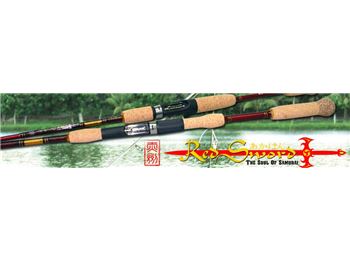Fishing Tackle Maintenance - Part 2
The previous article on tackle maintenance looked at some tips for looking after your reels, this continues from that point looking at a few strategies that can help add some years to the life of your rod and line.
ROD CARE
There is less to take care of when it comes to dealing with rods but you should still give it a basic run over to help keep it in good condition.
Always handle the rod carefully particularly with graphite rods as it doesn't take much to take the end off them. House doors, low holiday home roofs, boat floors and car doors are all areas that can force you to go and buy a new rod tip and / or guides.
After a session give the rod a clean similar to your reel making sure to wash down any metal parts such as the guides or gimbal. Remember to take the reel off the rod before cleaning as this will ensure the reel seat gets a decent wash and it will also make sure the seat dries properly after you've finished the clean. Leaving a reel on during and after a clean can provide a spot that holds water or dampness which may begin to damage the rod over a period of time.
You may need to give the rod butt a good scrub down as they tend to get feral from a day's worth of burley, bait, blood and scales. This can be done with a soapy rag or dishcloth. For washing cork handles try using a light waterproof sandpaper or steel wool.
Once you have rinsed it, dry it with a rag and spray the guides, reel seat and gimbal with an aerosol lubricant like Inox wiping it down a few minutes later. This helps to reduce any chance for corrosion. If you put your rods into a rod bag or pipe ensure they are fully dry before doing so as those storage locations can hinder the drying process.
Attaching lures to the frame of the guide rather than inside to reduce opportunity for damage
Occasionally check the guides to see if any damage has occurred. Try running a knife lightly around the inside of the guide to feel if any notches are present. Alternatively pull a stocking or cotton wool through it and watch for any edges in the guide that grab fibres.
If there is rust where the guides connect the rod, or if there are any notches, dents or edges in the guide itself then it should be replaced. These faults can prove to be expensive as not only can they result in lost fish but they could be damaging your line each time it passes through the guide and end up costing you a total re-spool.
LINE CARE
While going through your clean-up process check the first few metres of line on your reels for any signs of abrasion that have occurred through the day. This can happen by line being dragged across the reef or rocks or the teeth or fins of something you may have tangled with. If there are any visible weak spots present cut the required length of line off and re-tie your knots.
It can be a healthy practice to snip a metre or two of line off anyway after each fishing session. This will keep you fishing with healthy line and reduce the likelihood of any glitches giving way in the middle of a fight.
Run a stocking or cotton wool around the guides occasionally to check for damage
These few tips will help you get more life out of your fishing gear. It doesn't take long to do after a day out fishing and it's something that your diligence to only needs to be large as the day out was. If it was a quiet, short day out then a quick clean is all you need to bother with. If it was a long day fishing with plenty of activity and lots of exposure to the elements then a more thorough clean would be more appropriate.
(C) 2008 Seabreeze.com.au

Tips for better casting distances
Not getting the casting distances you want? This article provides a few pointers that can help maximise your effectiveness in this area of fishing.






